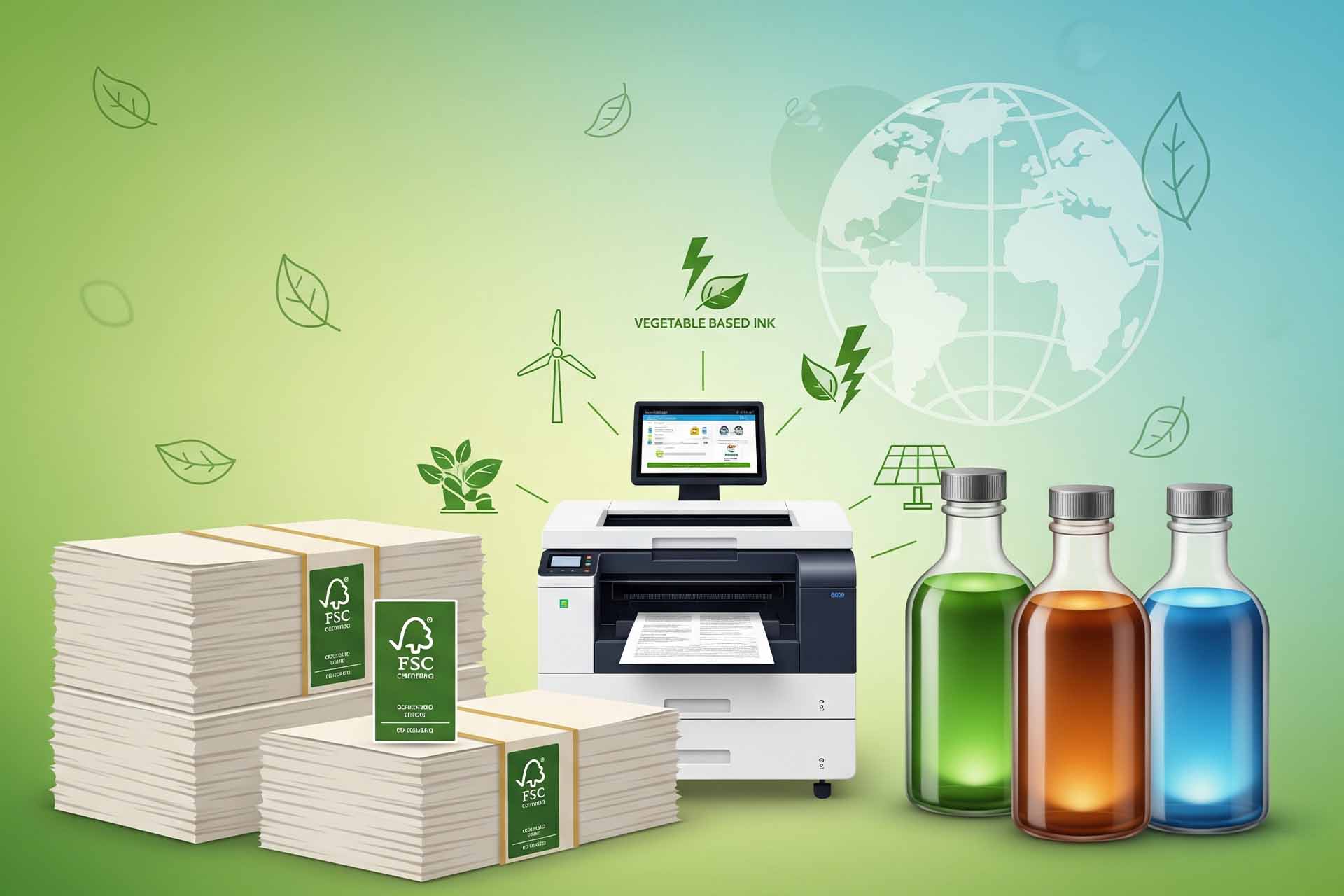
Sustainable Printing: How to Choose Eco-Friendly Materials Without Compromising Quality
When it comes to printing, going green isn’t just a passing trend—it’s an investment in a sustainable future. Choosing eco-friendly printing materials helps protect the environment while still delivering professional-quality results. By adopting sustainable practices at every stage of the printing process, businesses can balance responsibility with excellence.
How to Choose Eco-Friendly Materials While Maintaining Print Quality
1. Paper: The Foundation of Printing
- Recycled Paper: Opting for recycled paper reduces the need for deforestation and saves energy, all while producing outstanding results. Look for smooth, coated varieties such as CRB paper, which ensures vibrant colors and excellent print quality.
- Certified Paper: Always check for the FSC (Forest Stewardship Council) certification, which guarantees the paper comes from responsibly managed forests that protect biodiversity.
- Chlorine-Free Paper: Choosing paper bleached without chlorine minimizes harmful chemical pollution, making your prints safer for the planet.
2. Ink: The Secret Behind Vibrant, Eco-Friendly Colors
- Vegetable-Based Inks: Unlike conventional inks made with petroleum-based oils, these are derived from renewable sources such as soy, corn, or linseed. They are biodegradable, release fewer volatile organic compounds (VOCs), and deliver precise details with rich colors.
- UV Inks: These inks cure instantly under ultraviolet light, speeding up production while significantly reducing VOC emissions. They also provide long-lasting prints resistant to weather conditions.
3. Printing Techniques That Reduce Waste
- Double-Sided Printing: A simple yet powerful way to cut paper usage and reduce waste. Encourage it as the default option.
- Print-on-Demand: Only print what you need—this prevents overproduction and eliminates piles of unused prints.
- Digital Printing: More efficient than traditional methods, digital printing lowers waste output and consumes less energy.
4. Additional Eco-Friendly Materials
- Biodegradable Plastics: If your project requires plastics, choose biodegradable options made from renewable sources like corn starch. These break down naturally over time without leaving harmful residues.
- Eco-Friendly Adhesives: Avoid toxic solvents by selecting adhesives made with environmentally safe formulas.
Why Sustainable Printing Strengthens Your Brand
Incorporating these choices into your printing strategy not only reduces environmental impact but also enhances your brand’s reputation as a responsible, forward-thinking business. Customers today value companies that align with sustainability and social responsibility.
At Loop Media, we help businesses choose the right eco-friendly printing materials while ensuring unmatched quality. Thanks to our expertise and strong network of suppliers, printers, and industry specialists, we deliver sustainable print solutions that look exceptional and perform flawlessly.
👉 Ready to take your brand’s printing to the next level—without harming the planet? Contact Loop Media today and start your journey toward sustainable printing excellence.
- 📞 (+966) 53 692 8397
- 📧 Support@loop-media.co
- Visit our Contact Us page.
This article is available in Arabic. You can read the Arabic version [here].
 العربية
العربية


